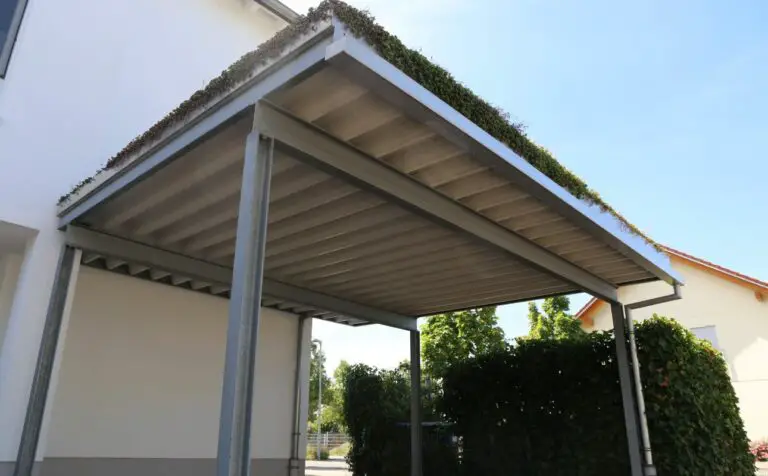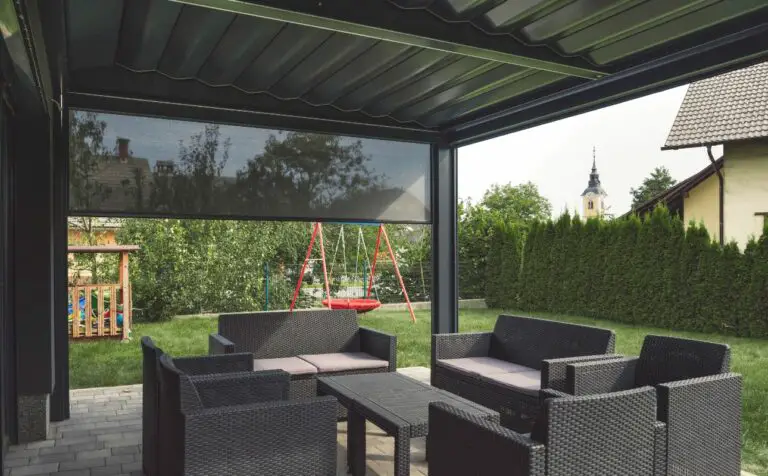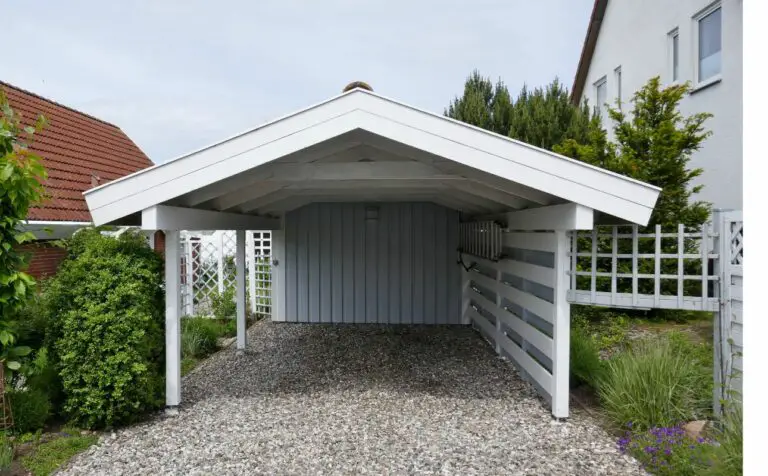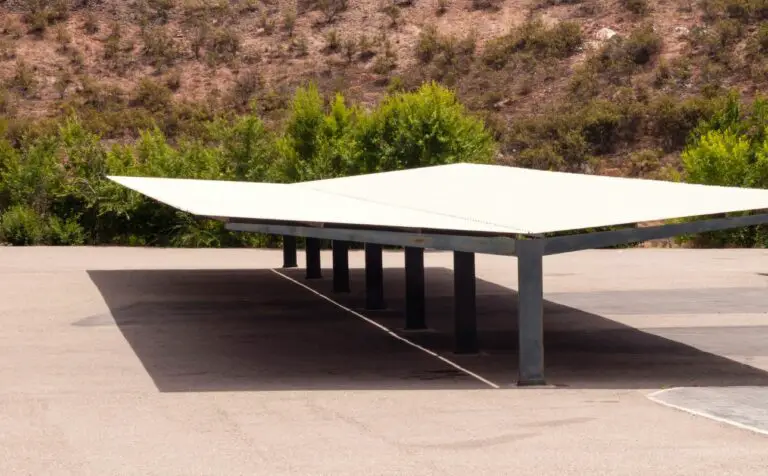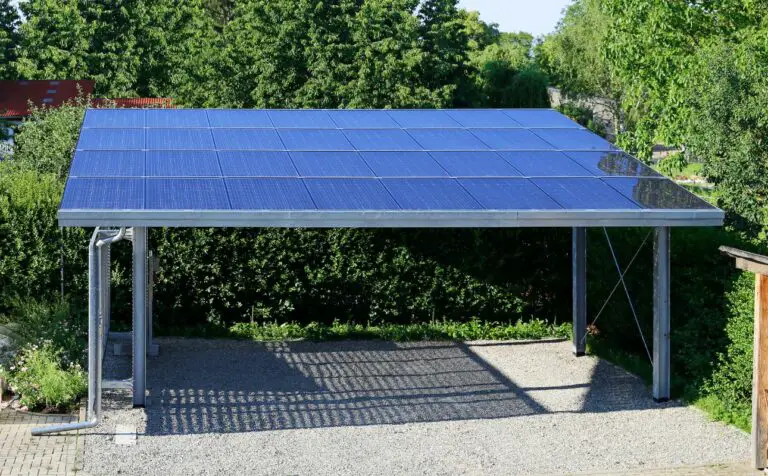As the winter season approaches, homeowners start preparing for the cold weather and its effects on their homes. One of the concerns that arise during this time is frost formation on vehicles parked outside.
Frost can be a major inconvenience to car owners, as it can make driving dangerous and cause damage to the vehicle’s exterior. This prompts many homeowners to wonder if installing a carport can prevent frost from forming on their cars.
To answer this question, it is important to understand how frost forms and what factors contribute to its formation. By doing so, we can assess whether or not carports are an effective solution for preventing frost.
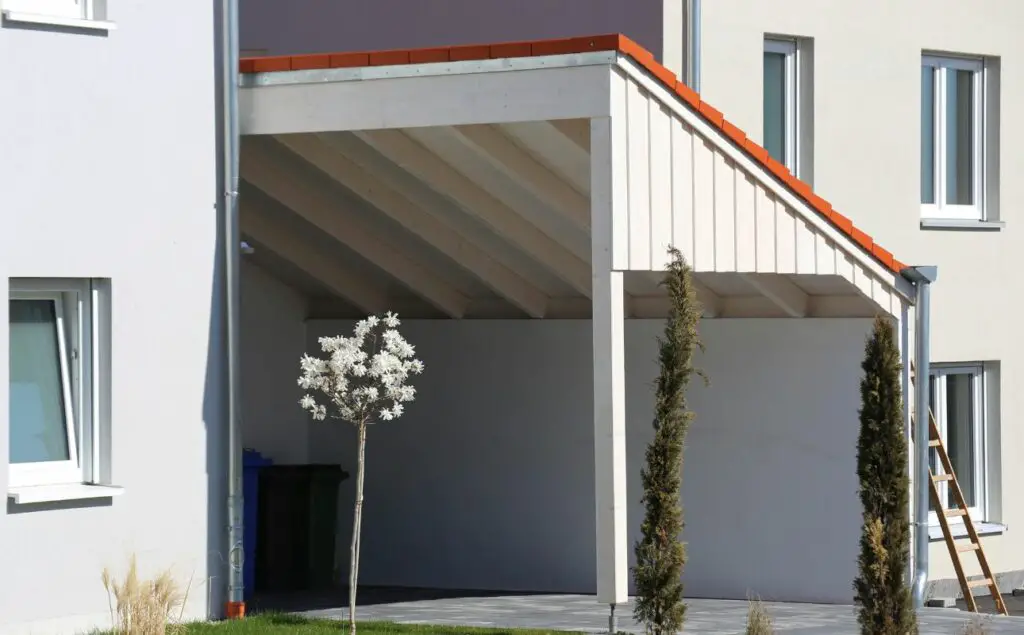
About Frost Formation
Frost formation is a natural phenomenon that occurs when the temperature of surfaces, such as the exterior of a car, drops below the freezing point of water. It is the result of water vapor in the air undergoing a phase change from a gas to a solid directly, bypassing the liquid state.
When the air becomes saturated with moisture and the temperature drops, water vapor condenses and freezes onto surfaces, forming ice crystals.
Several factors contribute to the formation of frost. Firstly, low temperatures are a prerequisite for frost formation. The freezing point of water is 32 degrees Fahrenheit (0 degrees Celsius), but frost can occur even when temperatures are slightly above freezing due to localized cooling effects. Secondly, moisture in the air, typically in the form of humidity, is crucial for frost to develop. Higher levels of moisture increase the likelihood of frost formation.
The presence of surfaces that provide nucleation sites can also influence frost formation. These surfaces, such as car windows or metal surfaces, provide a substrate for ice crystals to form. They cool more quickly than the surrounding air, creating a favorable environment for the condensation and subsequent freezing of water vapor.
Carports, which are semi-covered structures designed to shelter vehicles, can potentially impact frost formation. By offering partial protection against the elements, carports may create a microclimate that differs from the ambient conditions. This microclimate can affect the factors influencing frost formation, such as temperature and exposure to moisture.
The Benefits of Carports
One advantage of having a covered parking structure is that it can provide protection from the cold weather elements. Carport installation can be an excellent way to keep your vehicles safe from snow, hail, and other harsh weather conditions during the winter months.
In addition to this, carports offer several maintenance tips for keeping your cars in good condition. They can protect your vehicle’s paint job from fading due to sun exposure and prevent rusting caused by moisture accumulation on metal surfaces.
Furthermore, carports also provide a sheltered area where you can park and unload groceries without getting wet during rainy days. Whether you’re looking for a way to protect your cars or create an additional storage space outside your home, installing a carport may be an excellent option.
The Effectiveness of Carports in Preventing Frost
With the bitter cold and snowfall that can occur during winter months, it is crucial to consider effective solutions for protecting vehicles from icy conditions.
Carports are a popular option for providing shelter to cars, but do they prevent frost? The answer is not straightforward as it depends on various factors such as carport insulation and heating options.
While carports may provide some protection against frost by shielding the vehicle from direct exposure to the elements, they may not be enough in extreme weather conditions. However, adding insulation to the carport or using heating options such as portable heaters or radiant floor heating can significantly improve its effectiveness in preventing frost.
It is important to note that proper maintenance of the carport and regular cleaning of any accumulated snow or ice can also contribute to its effectiveness in protecting your vehicle.
Tips for Maximizing the Benefits of Your Carport
Maximizing the effectiveness of carports in protecting vehicles during winter months requires implementing maintenance and heating strategies, as research shows that 70% of carport users report improved insulation and regular cleaning as crucial factors for preventing frost on their cars.
To maintain your carport, it is important to clean it thoroughly at least twice a year with soap and water to remove any dirt or debris buildup that can trap moisture and lead to rust formation. Additionally, inspecting the roof regularly for leaks and damage can ensure proper drainage during heavy rainfall or snowfall, which prevents ice buildup.
Investing in a portable heater can also be beneficial for those who live in areas with freezing temperatures, providing an additional layer of protection against frost. Utilizing winter storage solutions such as car covers or mats can also prevent frost from forming on your vehicle’s exterior.
Other Winter Weather Protection Options
Garage and carport are two common options for winter weather protection. While garages offer enclosed and insulated spaces, carports provide partial protection against snow, rain, and wind.
Garage vs. Carport
While garages offer enclosed protection from all weather elements, carports provide only partial coverage, leaving cars exposed to wind, snow, and ice.
Here are some pros and cons to consider when choosing between a carport or a garage:
- Garages offer full protection from harsh weather conditions.
- Carports are more affordable than garages.
- Garages require more maintenance than carports due to their enclosed structure.
- Carports can be customized to fit any size vehicle or property area.
- Garages typically increase the home value more significantly than carports.
If opting for a carport over a garage, it is important to take proper maintenance measures such as regularly removing snow and ice buildup on the roof to prevent damage. Ultimately, the decision between a garage or a carport depends on personal preference, budget constraints, and geographical location.
Other Winter Weather Accessories
Winter weather accessories such as snow brushes and ice scrapers are like armor for a car, shielding it from harsh elements and ensuring safe driving conditions.
However, there are other winter weather accessories that can further protect your vehicle from freezing temperatures and icy conditions. Snow removal tools such as snow shovels and snow blowers can help clear your driveway, preventing the buildup of snow which can lead to ice formation.
Additionally, installing driveway heating systems can prevent the accumulation of ice altogether, making it easier to park and drive safely even during heavy snowfall.
Cost Comparison of Different Options
Comparing the costs of various options to protect vehicles from harsh winter weather conditions can aid in making an informed decision.
Carports are one option that can provide cost savings compared to a traditional garage. The installation process for carports is also typically simpler and quicker than building a garage, which may require permits and additional construction costs.
Other winter weather accessories such as heated car covers or portable heaters may also be considered, but these options may have higher upfront costs and ongoing expenses.
The Bottom Line
Frost formation is a common occurrence during the winter season that can damage your car. Carports offer an effective solution to prevent frost and protect your vehicle from the harsh elements of winter weather.
They are designed to provide a sheltered space for your car, preventing frost from forming on its surface. Carports also offer additional benefits such as protecting your vehicle from rain, snow, and hail. They help extend the lifespan of your car by keeping it protected from external damages caused by weather conditions.

